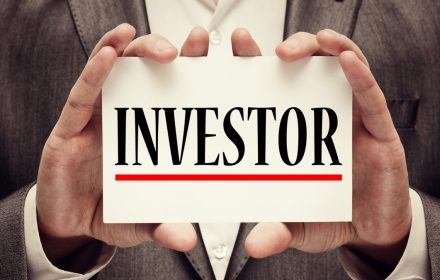The new year brings new rules for everyone who wants to preserve and grow their capital. Investing in real estate is still one of the most reliable and proven options, but the market sets its own conditions. In 2024, technological, environmental and social trends will radically change the way we invest. Old patterns fade into the background and new opportunities require deep understanding and analysis. Successful investments today depend not only on the choice of an object, but also on the ability to anticipate which trends will be profitable.
Trends in real estate investment in 2024
Today, the residential and commercial market is not just about square meters, but about a complex mechanism that adapts to new conditions. Investment opportunities in real estate in 2024 go beyond traditional approaches. Technology, the environment and changing consumer preferences create the conditions for the development of new strategies. By understanding trends, investors can make well-considered investments and minimize risks.

Energy-efficient buildings
 Energy efficiency is not just a buzzword, but a necessity of the moment. Stricter environmental regulations and rising energy prices make new construction one of the most sought-after investments. By reducing the consumption of raw materials by 30-40%, we not only contribute to the preservation of our planet, but also make apartments attractive to tenants and buyers. Investments in such assets yield a return of up to 10% per year. In addition, the energy efficiency certificate (LEED, BREEAM) increases the value of a building by 15%.
Energy efficiency is not just a buzzword, but a necessity of the moment. Stricter environmental regulations and rising energy prices make new construction one of the most sought-after investments. By reducing the consumption of raw materials by 30-40%, we not only contribute to the preservation of our planet, but also make apartments attractive to tenants and buyers. Investments in such assets yield a return of up to 10% per year. In addition, the energy efficiency certificate (LEED, BREEAM) increases the value of a building by 15%.
Example: The price of a house in a residential complex with solar panels in the Moscow region has increased by 25% in three years.
Smart homes
Smart technologies are not the future, but the present. Smart homes with automatic lighting, climate and security systems increase the liquidity of real estate by 20%. The nature of the investment in such properties increases rental income by 15-20%. The popularity of IoT devices is growing: 60% of buyers already prefer homes with automation functions.
Investments in low-rise complexes
Low-rise buildings are gaining popularity. More and more often, couples and home workers choose to live in rural areas. Investors who invest in low-rise complexes receive stable returns. Over the past five years, the cost of this type of housing has increased by 25%, while the demand for rural housing has increased by 30%. An important success factor is the developed infrastructure: schools, shops, transport links.
First: The investor is looking for a solution for 2019 for 4 million rubles. In 2024, the population will reach 6 million, and civilizations will have excellent infrastructure and advanced outbreaks.
How to invest in commercial real estate?
Commercial real estate remains one of the most profitable market segments. Investing in commercial real estate requires careful analysis, but with the right approach, this method can bring a return of up to 15% per year. In 2024, successful investments depend on choosing the right sector and understanding the needs of the market.
Advantages of the different segments:
- Office space. Traditional office spaces are losing popularity due to the rise of remote working. Flexible spaces, such as: B. Coworking spaces, show an annual profitability growth of 12%. Rents in modern shopping malls remain stable due to demand from startups and small businesses.
- Storage facilities. E-commerce is driving demand for warehouse space. Investments in warehouses near major transportation hubs generate stable returns of up to 14% per year.
- Shopping malls. Large shopping malls are making way for small neighborhood centers. The profitability of these types of facilities is 10% if the right location and tenants are chosen.
Opportunities to invest in real estate with minimal risk
Every investor wants to limit the risk, especially when it comes to large amounts. In 2024, there are reliable tools available that make real estate investments safe and efficient. A competent approach and diversification ensure stable profits with minimal losses:
- Real estate investment companies. REITs offer the opportunity to invest in large projects without having to buy real estate directly. The average return on these funds is 8-10% per year. The advantage is diversification and the possibility of generating passive income. For example, by investing in a fund specializing in commercial real estate, investors were able to achieve a return over a period of 5 years that was 45% higher than with a conventional investment in apartments.
- Shareholding in construction. If you invest in the initial construction phase, you can purchase a home 20 to 30% cheaper. There are risks associated with delivery dates, but experienced developers minimize them. The strategy is suitable for long-term investments with an investment horizon of 2 to 3 years.
- Purchase of properties with long-term tenants. Real estate delivered with rent: stable cash flow. The profitability of these properties is 12% per year.
Where to invest in real estate: the best strategies for 2024
Investors often ask themselves: where to invest in real estate? In 2024, the answer depends on the amount of capital, the level of risk and the investment horizon.
Strategies for different budgets:
- Small capital: investments in rental studios or investments through crowdfunding platforms.
- Medium capital: purchase of apartments or low-rise housing.
- Large capital: acquisition of commercial real estate.
Promising regions:
- Moscow and St. Petersburg: stable profitability and high liquidity.
- Southern Russia: Growing demand for holiday homes.
- Siberia and the Far East: infrastructure development creates new opportunities. Mistakes in Real Estate Investment
Typical mistakes can reduce the profitability of a capital investment to zero. The most common are:

- Poor location selection.
- Ignoring hidden costs.
- Investing in real estate with low liquidity.
Conclusion
 In 2024, a variety of real estate investment opportunities will offer new opportunities for those who are willing to adapt to change. Success depends on the ability to analyze the market, select promising properties and avoid common mistakes.
In 2024, a variety of real estate investment opportunities will offer new opportunities for those who are willing to adapt to change. Success depends on the ability to analyze the market, select promising properties and avoid common mistakes.
 en
en  de
de  ar
ar  es
es  nl
nl  hi
hi  fr
fr  it
it  pt
pt  el
el 



